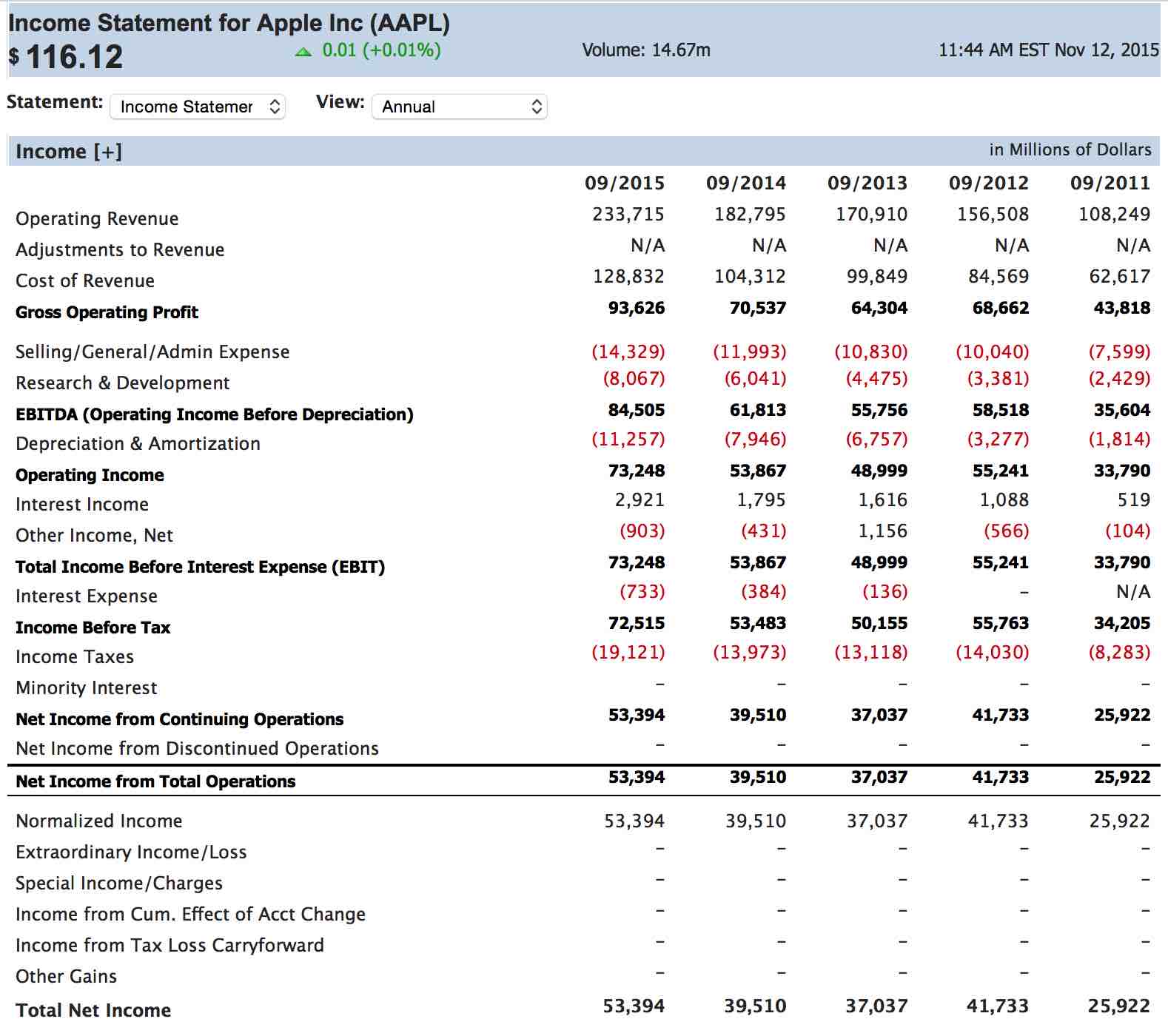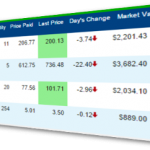Definition
The Income Statement is one of the financial statements that all publicly traded companies share with their investors. The income statement shows the company’s sales, expenses, and net profit (or loss) over a period of time–usually 3 months, year-to-date, and twelve months. The income statement also comes with a lot of notes and discussions from the company’s management so that investors can have a clear understanding of the company’s performance. The other two components to the financial statements are the Balance Sheet and the Statement of Cash Flows.
Explanation
Income statement (also referred to as profit and loss statement (P&L), revenue statement, statement of financial performance, earnings statement, operating statement or statement of operations) is a company’s financial statement that show whether or not the company is making a profit. The income statement shows, for a stated period of time, the total amount of revenue from the sale of products or services, the total expenses involved in running the business, and finally the net profit or loss. The income statement serves 2 main purposes: it shows managers how their part of the business is performing and whether they are keeping to a budget, and it shows investors the overall performance of the company. The important thing to remember about an income statement is that it represents a period of time. This contrasts with the balance sheet, which represents a single moment in time.
The portion of the income statement that deals with operating items is interesting to investors and analysts alike because this section discloses information about revenues and expenses that are a direct result of the regular business operations. For example, if a business creates sports equipment, then the operating items section would talk about the revenues and expenses involved with the production of sports equipment. The term “bottom line” refers to the net income of the company because when you look at an income statement, the bottom line is usually net income.
The non-operating items section discloses revenue and expense information about activities that are not tied directly to a company’s regular operations. For example, if the sport equipment company sold a factory and some old plant equipment, then this information would be in the non-operating items section.
Steps in Understandings the Income Statement Sheet
In order to best understand how to read and understand an Income Statement Sheet, it’s important to understand the order of which information is displayed.
- Date: At the top of the Income Statement is the date that the statement was created and reflects all data up to that point. The Income Statement will read “For the period ending xxx”
- Net Sales: represents the total amount of income received from customers paying for the company’s goods and services.
- Cost of Sales (also known as Cost of Goods Sold): is the amount of money the company has spent in the production of its goods. Raw materials, labor, manufacturing overhead are included in this figure.
- Gross Profit or Margin: represents the profit a company has earned only after taking into account the Cost of Sales (#3)
- Operating Expenses: This figure represents the amount spent on operational expenses, and is normally broken down in to two figures: (i) Research and development (ii) Selling, general and administrative.
- Operating Income: This figure represents earnings from normal operations without taking in to consideration taxes and special one time occurring items (e.g.: settlement of a court case.)
- Interest Expense: This figure reflects the cost of borrowing money.
- Pre-tax Income: This figure represents total earnings not including taxes. This may also be labeled Income before provisions for income taxes.
- Income Taxes: The income tax amount is an estimate as taxes are normally paid once a year, while Income Statements are released four times a year. This figure best represents what taxes the company expects to pay and may also appear on an income statement as Provision for income taxes.
- Special or Extraordinary Expenses: This figure represents “special” expenses, which do not normally occur on a continued basis. For example, the purchase of a new warehouse is not a regular occurrence.
- Net Income: This figure represents the residual income after adding total revenues and subtracting this figure with all expenses.
Example of Income Statement
When you get a stock quote on the HowTheMarketWorks site, you can also view the company’s financial statement. Below is Apple’s Income Statement as of September 2015 (NOTE: In the upper right corner it says all numbers are in MILLIONS):
Note how the Income Statement flows in the same order as listed above.
Since Apple has no debt Interest Expense, (#7) is not included.
Apple had no Extraordinary Expenses (#10) so this is also not included.
Finding A Company’s Balance Sheet On HowTheMarketWorks
You can find the balance sheet of every company trading on a major US, Canadian, or even many international exchanges on HowTheMarketWorks.
First, go to the Quotes page.
From here, look up any company’s ticker symbol that you are interested in, and click the tab for “Financials”:

From here, you can use the drop-down menu to switch between their most recent income statement, cash flow summary, or balance sheet.

Conclusion
Investors pay close attention to an Income Statement because it is an accurate snapshot of a company’s performance over a specific time period.
Lenders also evaluate the suitability of a loan based on the Income Statement.
The Income Statement is a direct result of all financial information incurred during the time period and is transformed into easy to understand figures.
Comparing Income Statements to those in the past periods is a great indication of the direction a company is heading in.
Investors pay close attention to the “bottom line” Net Income and expect this figure to increase on a consistent basis over time. The “bottom line” figure is often the first set of data an investor looks at before determining its suitability for investment.
An increasing Net Income over time can be indicative that the company is heading in the right direction, while a decreasing Net Income can reveal the opposite.
For more financial statements, read our article on balance sheets


 Learn To Trade Mutual Funds
Learn To Trade Mutual Funds Streaming Prices On Your Open Positions!
Streaming Prices On Your Open Positions!
